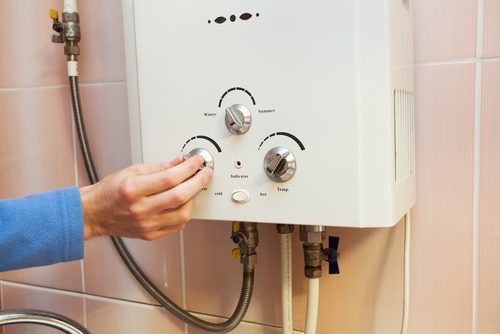Ensuring Longevity of Your Home's Hot Water System: Care Advice
Ensuring Longevity of Your Home's Hot Water System: Care Advice
Blog Article
This article below on the subject of Tips on Maintaining a Water Heater is totally informative. Don't overlook it.

Hot water is necessary for daily convenience, whether it's for a refreshing shower or washing meals. To ensure your hot water system runs successfully and lasts longer, regular upkeep is vital. This post gives practical suggestions and insights on exactly how to keep your home's warm water system to prevent interruptions and costly repairs.
Introduction
Maintaining your home's warm water system might seem complicated, but with a couple of basic steps, you can ensure it runs smoothly for several years to come. This overview covers everything from comprehending your hot water system to do it yourself maintenance tips and recognizing when to contact specialist aid.
Value of Maintaining Your Warm Water System
Regular upkeep not just extends the life expectancy of your warm water system yet additionally ensures it operates effectively. Ignoring upkeep can lead to decreased efficiency, higher energy expenses, and even premature failing of the system.
Indications Your Warm Water System Demands Upkeep
Recognizing when your hot water system requires attention can prevent major issues. Look out for indications such as inconsistent water temperature, strange noises from the heater, or rusty water.
Flushing the Water Heater
Flushing your hot water heater gets rid of debris accumulation, enhancing effectiveness and extending its life.
Monitoring and Replacing Anode Rods
Anode rods avoid rust inside the tank. Examining and replacing them when worn is critical.
Facility Concerns Requiring Professional Help
Instances consist of significant leaks, electrical problems, or if your hot water heater is constantly underperforming.
Routine Professional Upkeep Conveniences
Specialist maintenance can include complete examinations, tune-ups, and ensuring compliance with safety and security requirements.
Inspecting and Adjusting Temperature Level Settings
Adjusting the temperature level settings ensures optimum efficiency and safety.
DIY Tips for Upkeep
You can carry out several upkeep tasks yourself to maintain your hot water system in top condition.
Looking for Leaks
On a regular basis evaluate pipes and connections for leakages, as these can bring about water damages and higher bills.
Understanding Your Hot Water System
Prior to diving into maintenance jobs, it's handy to recognize the fundamental elements of your hot water system. Typically, this consists of the water heater itself, pipes, anode rods, and temperature level controls.
Regular Monthly Upkeep Tasks
Routine monthly checks can aid catch small issues before they rise.
Evaluating Stress Relief Valves
Examining the pressure safety valve guarantees it works appropriately and avoids too much pressure build-up.
Insulating Pipes
Shielding hot water pipes lowers warm loss and can conserve energy.
When to Call an Expert
While do it yourself maintenance is valuable, some issues need professional know-how.
Conclusion
Routine upkeep of your home's warm water system is important for effectiveness, long life, and expense financial savings. By adhering to these tips and understanding when to look for specialist aid, you can ensure a reliable supply of hot water without unforeseen disturbances.
How to Maintain an Instant Hot Water Heater
Before tinkering with your hot water heater, make sure that it’s not powered on. You also have to turn off the main circuit breaker and shut off the main gas line to prevent accidents. Also turn off the water valves connected to your unit to prevent water from flowing into and out of the appliance. 2. When you’re done, you have to detach the purge valves’ caps. These look like the letter “T†and are situated on either side of the water valves. Doing so will release any pressure that has accumulated inside the valves while at the same time avoid hot water from shooting out and burning your skin. 3. When the purge valves’ caps are removed, you have to connect your hosing lines to the valves. Your unit should have come with three hoses but if it didn’t, you can purchase these things from any hardware or home repair shops. You can also get them from retail stores that sell water heating systems. Read the user’s manual and follow it to complete this task properly. When the hosing lines are connected, open the purge port’s valves. 4. You should never use harsh chemical cleaners or solutions when cleaning your unit. Make use of white vinegar instead. It should be undiluted and you’ll probably use about 2 gallons. 5. Now flush your water heater. This task should probably take about 40 minutes. We can’t give you specific directions for this because the procedure is carried out depending on the type, model and brand of your heater. With that being said, refer to the user’s manual. 6. When you’re done draining the unit, you have to turn off the purge port valves again. Remove the hosing lines that you earlier installed on each of the water valves. Put the valve caps (purge port) back in their respective places and be very careful so as not to damage the rubber discs that are found inside these caps. 7. Now that everything’s back in place, check your user’s manual again to find out how to reactivate your water heating system. 8. Once it is working, turn one of your hot water faucets on just to let air pass through the heater’s water supply pipes. Leave the tap on until water flows smoothly out of it. https://www.orrplumbing.com/blog/2014/september/how-to-maintain-an-instant-hot-water-heater/

We were shown that report on How to Maintain Your Water Heater & Prolong its Life through someone on our other blog. Do you know someone else who is sincerely interested in the topic? Take a moment to promote it. I truly appreciate your readership.
Get An Estimate Report this page